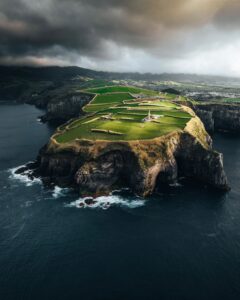
Photo tour in Azores, Portugal
Join us in the Azores for a unique photo tour, where you’ll elevate your creative skills with expert guidance from Ronald Soethje, Bruno Ázera, and Nomadict.
Italian photographer Isabella Tabacchi is known for her atmospheric landscapes and aerial imagery that fuse technical mastery with deep emotion. From the Icelandic highlands to the Alpine peaks, she transforms wild places into poetic compositions. In this article, she shares six key techniques for crafting emotion-driven narratives from above.
For me, aerial photography isn’t just about capturing a place from above—it’s about translating emotion into imagery. Every shot begins with a feeling I want to convey, and from there, I make conscious choices in how I frame, light, and edit each scene. It’s a process that blends intuition with technique. Here are six essential approaches I rely on to create drone images that feel as much as they impress:
When I fly the drone, I begin with a clear vision of the mood I want to convey—whether it’s a sense of vastness, solitude, peace, or awe. From there, I search for scenes with emotional depth. It’s not just about the subject but also how it’s framed, how the light moves, how shadows fall, and how each element works in harmony. Intuition plays as big a role as technique.
To be a strong drone photographer, it’s not just about knowing how to fly—it’s even more important to have a solid understanding of photography. You need to spot compelling elements from above and know how to compose them effectively.
Alongside my instincts, I follow a few simple techniques that help strengthen my aerial work. I often use the rule of thirds to create balance and rely on leading lines—like rivers, roads, or shorelines—to guide the viewer’s eye through the frame. Foreground elements can add scale and context, while symmetry or repeating patterns often bring visual interest.
I also change altitude and tilt to find the most powerful angle. Shooting during golden hour adds soft, warm light that enhances textures. And sometimes, using natural frames—like trees or rocks—can focus attention right where I want it.
While I sometimes scout scenes on Google Earth, the best discoveries often happen mid-flight. On-location conditions rarely match what you see from above online—seasonal shifts, changing light, or unexpected textures can completely transform a place. That unpredictability is one of the most exciting parts of the process.
From the sky, I search for visual rhythms, soft curves, and contrast between natural and human-made forms. But I try to avoid the obvious. Even if a scene has strong patterns or colors, I want it to say something more.
Leading lines that pull you toward a mountain or horizon are especially effective.
I also use negative space to let the subject breathe. In the end, it’s that balance between structure and softness that gives the photo emotional depth and makes it feel alive.
Weather and light are crucial to my work. Mist, soft light, and golden-hour tones can turn an ordinary landscape into something poetic. I often seek out fog or overcast skies for their ability to add mystery and depth. I prefer shooting in low light, when shadows are long and textures emerge gently. Nature sets the scene, and I aim to be present when it reveals its most soulful side. For images like Tree of Life or Eye of Earth, the light and overcast sky enhance the textures with soft contrast.
It’s also essential to avoid flying in bad weather. When there are strong winds, I always check how they might affect the drone’s performance and the potential risks involved.
To create that atmospheric depth, I work the same as in my classic photographs taken with my camera. I work with luminosity masks to enhance the three-dimensionality and the selective contrast, naturally. I also work a lot with the color contrast, adjusting the color cast in each area. I use other local adjustments to reduce clarity or sharpness in crucial areas for the composition. This also helps recreate the softness we feel with our eyes when looking into a vast landscape. I want the viewer to feel like they’re floating through the image.
“Misty Mornings” is deeply tied to my emotional connection with nature. The color palette is soft, desaturated, and balanced toward cool tones. It’s perfect for those drone shots with strong leading lines in the foreground, leading to the horizon, creating some depth but at the same time helping to recover the details and the highlights in the sky. Of course, it’s not just good for aerial photography but for the classic shots. If you have some foggy landscapes, especially those with low fog under the mountains with backlight, it’s perfect to enhance the fog. I designed it to bring calmness to the frame and to preserve the poetic quality of the scene, without overwhelming it.
Of course, presets are just a starting point, and you’re free to adjust them in the way you like.
Luminosity masks help me target specific tonal areas with precision, especially when I want to sculpt light or soften highlights. Gradients help create an atmosphere and focus on the target subjects. Often, I use them to gently darken the sky or bring in a hint of haze. Dodge and burn is my favorite technique to enhance and get a more 3D effect and visual impact on the viewer’s eye. If this technique is done well and not too much, the viewer will not notice what was done—but it’s like the picture has something more that attracts the eye.

Join us in the Azores for a unique photo tour, where you’ll elevate your creative skills with expert guidance from Ronald Soethje, Bruno Ázera, and Nomadict.
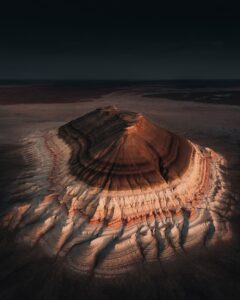
In this article, Forest shares how years of chasing scale, silence, and raw landscapes shaped his approach to photography, from the deserts of Kazakhstan to the volcanic ridges of Iceland. He talks about how he uses light, texture, and vast negative space to create images that feel both intimate and overwhelming.
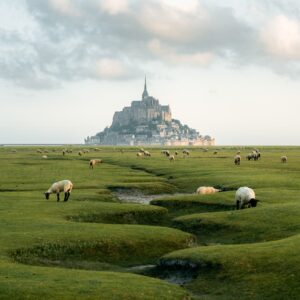
Simon shares the journey behind his photography, from early inspirations to field techniques, editing, and the story of the winning shot that shaped his path.
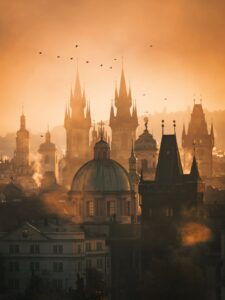
In this article, Miro shares how his love for cinematic music evolved into a deep passion for photography and how he uses light, color, and atmosphere to turn the streets of Prague into living film scenes.
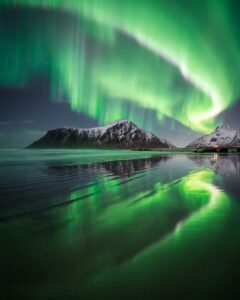
In this article, Stefanie reveals how her background in physics sparked her passion for astrophotography and how she blends science with creativity to capture the beauty of the night sky. Readers will discover her approach to color, contrast, and editing, as well as her aurora photography workflow.
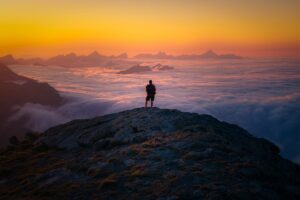
Spanish photographer Yhabril captures the profound connection between humans and the mountains that shaped him. Growing up in the Pyrenees, his work bridges outdoor sports, landscapes, and celestial scenes — often blending athletes, moonlight, and wilderness into striking visual stories.
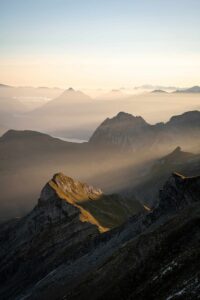
In this article, Ariane shares how photography helped her navigate personal challenges, connect authentically with people and animals, and develop a philosophy rooted in empathy and artistic freedom. Readers will also discover her ethical approach to wildlife photography and her trusted equipment for both camouflage techniques and cameras.
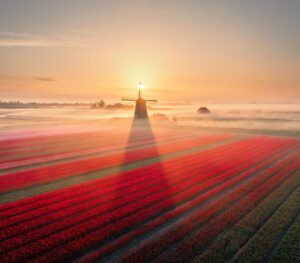
Discover how to photograph Dutch tulip fields in their most magical light. From choosing the right gear and lenses to mastering composition, color, and aerial perspectives, this guide shares creative techniques to capture the beauty of the Netherlands’ tulips. Learn how light, color grading, and proportion bring emotion into every frame.
